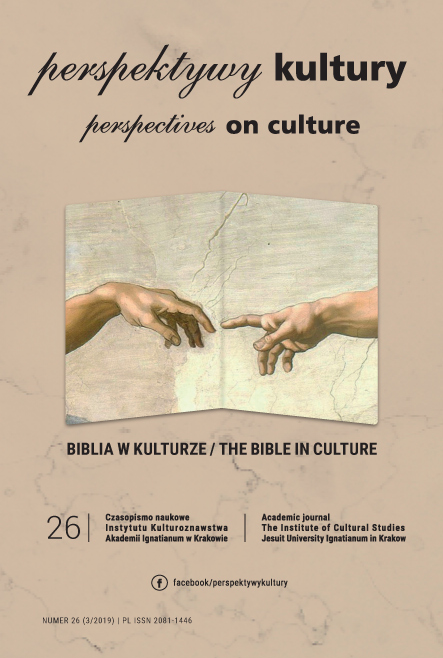The Conceptualization of the Phenomenon of Corporeality in Biblical Discourse
Based on the drama-parable Cursed by Alexandr Chyrkov and drama‑tale My soul with a scar on the knee by Jaroslav Vereshchak
Abstract
The article deals with the features of the conceptualization of corporeality in literary interpretation as an instrument and a category realized in the figural-emotive paradigm of the dramaturgy of the contemporary Ukrainian authors, A. Chyrkov and J. Vereshchak. It should be noted that in the studied dramatic works the conceptualization of the corporeal code of culture is extremely clear. It appeals to many biblical motifs with appropriate an sphere of concepts. The dramatic works suggest that evangelical projection demonstrates four concepts that itemize the specifics and principles of embodiment of physicality in the biblical discourse: 1) “Five wounds of Jesus Christ,” 2) “The Crucifixion,” 3) “The sinful flesh,” 4) “Body of Christ.” Corporeality in the biblical discourse correlates with world-modeling categories such as “soul” and “thing.”
References
Chyrkov A., Proklyatyj. Drama-prytcha, Vyd-vo FOP Yevenok O. O., Zhytomyr 2014.
Materyns’ka O.V., Semantyka najmenuvan’ chastyn tila v anhlijs’kij, nimec’kij, ukrayins’kij ta rosijs’kij movax (autoreferat), 10.02.17 Porivnyal’no-istorychne ta typolohichne movoznavstvo, Donec’k, 2005.
Medvedeva N.S., Problema sootnosheniya telesnosti i sotsial’nosti v cheloveke i obshchestve, (Ph.D. dissertation), 09.00.03, Luhansk 2005.
Podoroga V.A., Fenomenologiya tela, Nauka, Moskva 1995.
Selivanova O.O., Suchasna linhvistyka: terminolohichna encyklopediya, Dovkillya-K, Poltava 2006.
Tematicheskiy filosofskiy slovar’, Nauka, Moskva 2008.
Vereshchak J. Slav. Ko-Ko., Dusha moya zi shramom na kolini: Suchasna kazka, Vydavnyctvo Solomiyi Pavlychko “Osnovy,” Kyiv 2004.
Copyright (c) 2019 Jesuit University Ignatianum in Krakow

This work is licensed under a Creative Commons Attribution-NoDerivatives 4.0 International License.
Autor, zgłaszając swój artykuł, wyraża zgodę na korzystanie przez Wydawnictwo Uniwersystet Ignatianum z utworu na następujących polach eksploatacji:
- utrwalania utworu w formie papierowej, a także na nośniku cyfrowym lub magnetycznym;
- zwielokrotnienia utworu dowolną techniką, bez ograniczenia ilości wydań i liczby egzemplarzy;
- rozpowszechniania utworu i jego zwielokrotnionych egzemplarzy na jakimkolwiek nośniku, w tym wprowadzenia do obrotu, sprzedaży, użyczenia, najmu;
- wprowadzenia utworu do pamięci komputera;
- rozpowszechniania utworu w sieciach informatycznych, w tym w sieci Internet;
- publicznego wykonania, wystawienia, wyświetlenia, odtworzenia oraz nadawania i reemitowania, a także publicznego udostępniania utworu w taki sposób, aby każdy mógł mieć do niego dostęp w miejscu i czasie przez siebie wybranym.
Wydawca zobowiązuje się szanować osobiste prawa autorskie do utworu.





